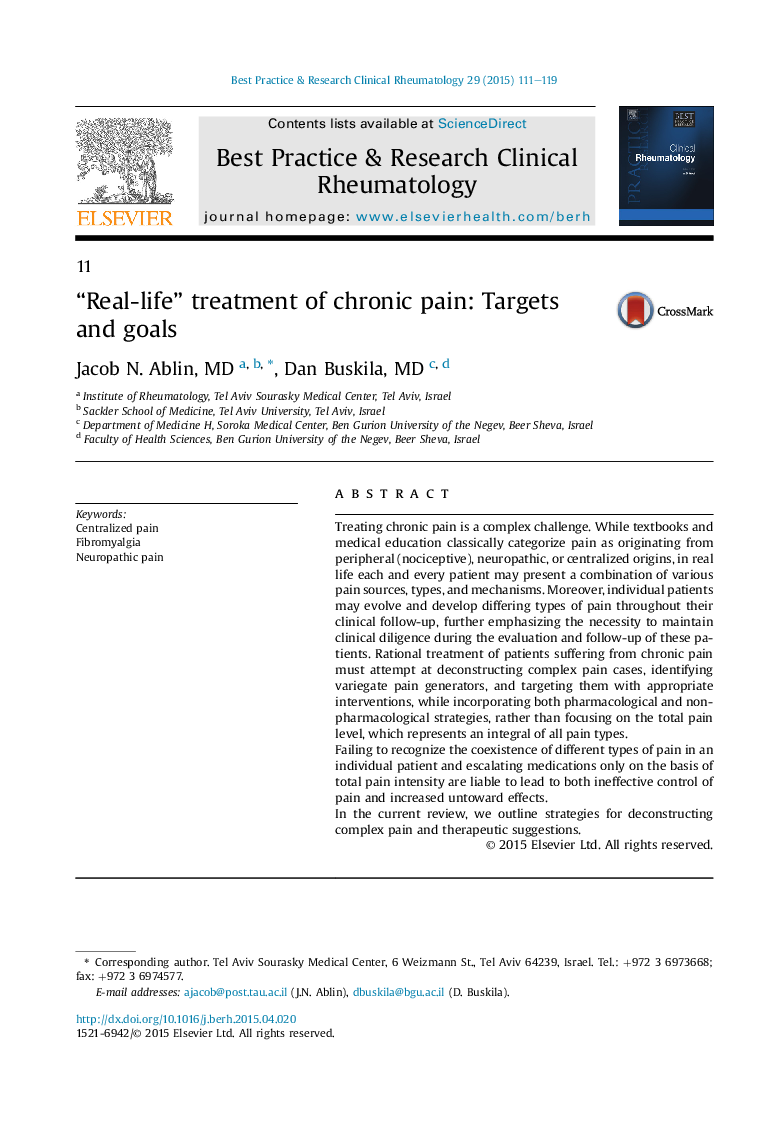| Article ID | Journal | Published Year | Pages | File Type |
|---|---|---|---|---|
| 3342956 | Best Practice & Research Clinical Rheumatology | 2015 | 9 Pages |
Treating chronic pain is a complex challenge. While textbooks and medical education classically categorize pain as originating from peripheral (nociceptive), neuropathic, or centralized origins, in real life each and every patient may present a combination of various pain sources, types, and mechanisms. Moreover, individual patients may evolve and develop differing types of pain throughout their clinical follow-up, further emphasizing the necessity to maintain clinical diligence during the evaluation and follow-up of these patients. Rational treatment of patients suffering from chronic pain must attempt at deconstructing complex pain cases, identifying variegate pain generators, and targeting them with appropriate interventions, while incorporating both pharmacological and non-pharmacological strategies, rather than focusing on the total pain level, which represents an integral of all pain types.Failing to recognize the coexistence of different types of pain in an individual patient and escalating medications only on the basis of total pain intensity are liable to lead to both ineffective control of pain and increased untoward effects.In the current review, we outline strategies for deconstructing complex pain and therapeutic suggestions.
